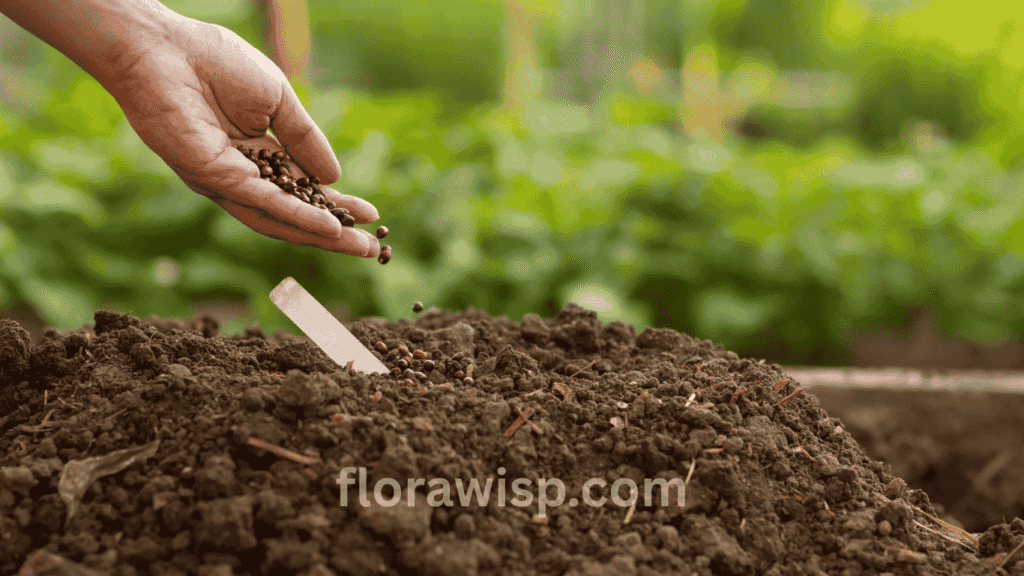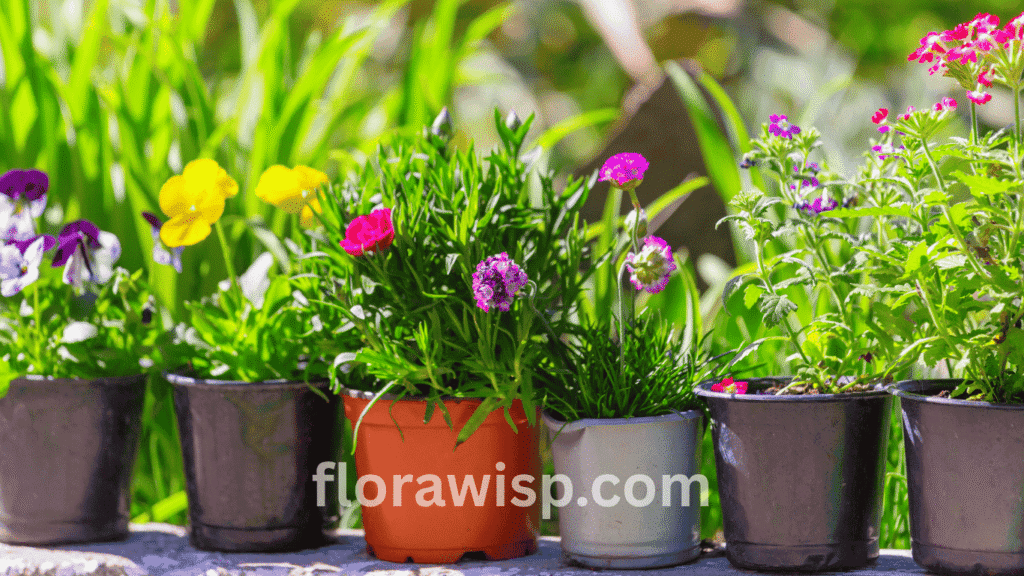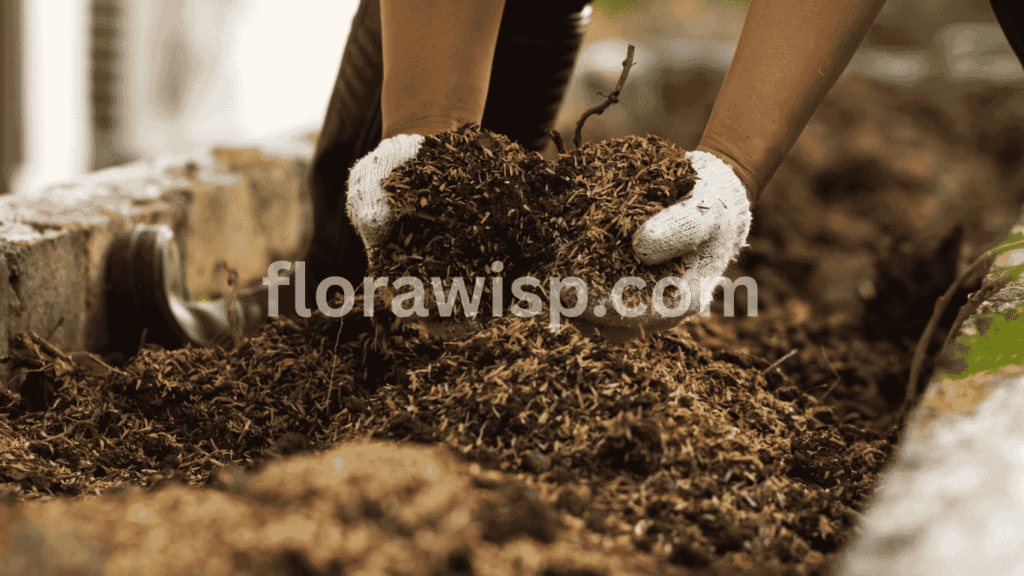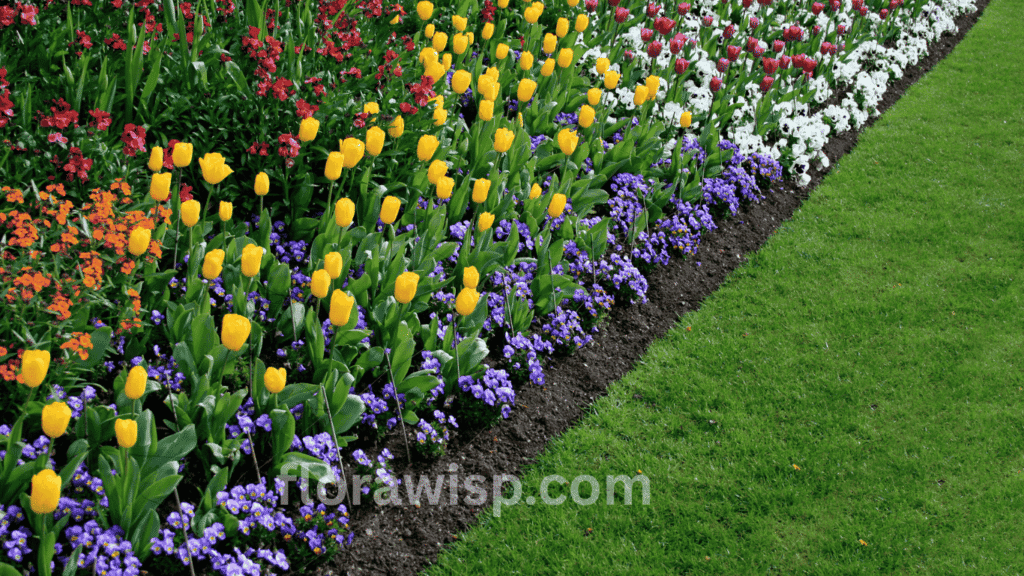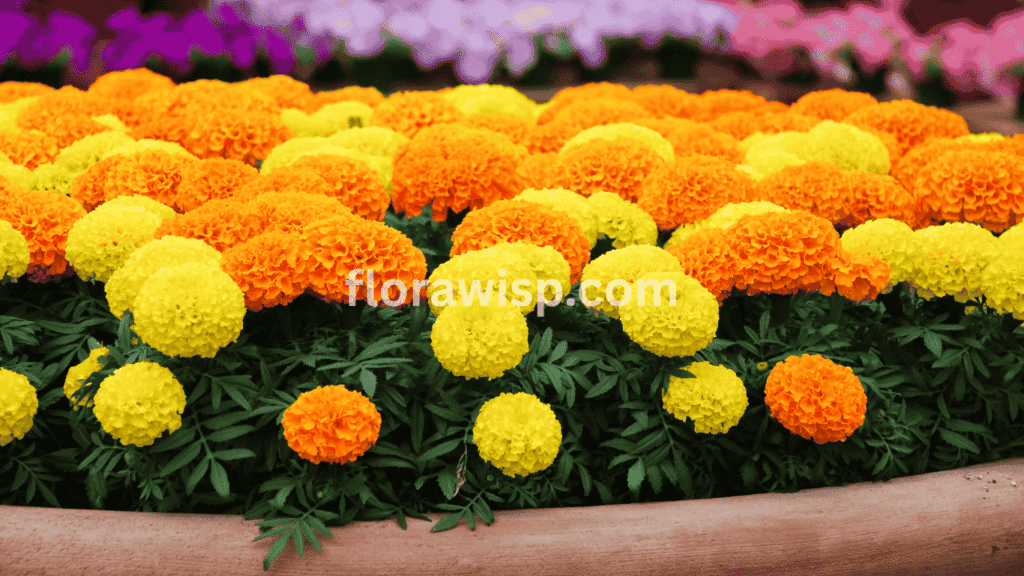Marigold seeds are your ticket to vibrant blooms and pest-free gardens. Discover when and how to plant them for thriving marigolds from seed. There’s a reason marigold seeds have earned their place in nearly every gardener’s toolkit. Beyond their sun-bright blooms and easygoing nature, marigolds are nature’s multitaskers.
They repel pests, attract pollinators, and add instant vibrancy to any space. Over the years, I’ve grown many marigolds from seed. I’ve saved money, improved soil, and designed entire color themes using just marigold varieties. If you’re unsure which variety fits your garden best, explore the stunning types of marigold to discover the perfect match for your space and climate. In this guide, you’ll get a complete roadmap to growing marigolds from seed: from choosing the best variety to getting lush, thriving plants that light up your garden.
If you’re new to gardening, check out my full guide on Planting Flowers for tips to start strong and avoid common beginner mistakes. Let’s peep in!
In This Article
Why Buying Marigold Seeds Is Better Than Buying Plants
Starting with marigold seeds, rather than purchasing transplants, offers several advantages. First, it’s cost-effective to grow dozens of plants for the price of one nursery transplant. It also allows you to control timing, variety, and health. In my own garden, I’ve observed better root strength and flower production when using marigold seeds instead of nursery starts. Plus, growing marigolds from seed helps you preserve heirloom genetics and even save your own marigold seed each year. If you’re also exploring container gardening, here’s a helpful guide on how to grow flowers in pots perfect for small spaces, balconies, or patio corners. Skip the markup: when you buy marigold plants, you’re often paying for convenience, not plant strength.
Where to Buy Marigold Seeds

Over the years, I’ve tested marigold seeds from just about every source from dusty corner shops to premium seed catalogs. If you’re wondering where to buy marigold seeds that actually germinate strong and bloom boldly, here’s what I recommend based on real results in home gardens and client landscapes.
Trusted Places to Buy Quality Marigold Seeds
- Local Garden Centers
- Great for inspecting seed packets before purchase.
- Staff can often guide you on what works best in your region.
- Great for inspecting seed packets before purchase.
- Online Seed Retailers
- Ideal if you’re looking for bulk marigold seeds or rare colors.
- I’ve personally had strong success with:
- Baker Creek Heirloom Seeds (USA) – Excellent germination and packaging.
- Johnny’s Selected Seeds – Great for commercial-scale planting.
- Ideal if you’re looking for bulk marigold seeds or rare colors.
- Farmers Markets & Plant Swaps
- Great source for locally adapted varieties.
- You can ask growers directly how the parent plants performed.
- Great source for locally adapted varieties.
Pro Tip: Always look for untreated, non-GMO marigold seeds. Treated seeds can delay sprouting or harm beneficial insects.
What to Check Before You Buy
- Harvest Date or Pack Date: Fresher seeds = better germination.
- Seed Origin: Regionally adapted seeds perform far better.
- Organic Certification: Especially important if you’re planting near vegetables.
- Bulk vs. Small Pack: Go bulk for beds and borders, small packs for patio containers.
Many of my landscaping clients now ask where I source my seeds and without hesitation, I guide them to quality online shops over big-box store seeds that often yield leggy, late-blooming plants. The difference truly shows by mid-June.
How to Plant Marigold Seeds : Step-by-Step

Wondering how to plant marigold seeds? Start with seed trays filled with moist, well-drained seed-starting mix. I make a shallow 1/4 inch trench and sow evenly, then gently cover with soil. Label each tray with the variety and date. That’s how I avoid surprises come bloom time. If you’re asking how to start marigold seeds, do it in a warm, bright room. Indoor planting lets you get a head start on the season.
Germination Tips That Work
To improve success, here’s how to germinate marigold seeds fast: keep trays at 70–75°F, use a humidity dome, and ensure steady moisture (not soggy!). I mist daily and remove the cover once seedlings appear usually in 4–6 days. Light is crucial: set trays under a grow light or near a south-facing window. These tweaks made a noticeable difference when I started seeds during late winter.
Planting Outdoors
Planting marigold seeds directly outdoors works well after frost danger passes. I rake the bed smooth, sow in rows, and cover lightly. This marigold seeds planting method is great for mass planting. Planting marigolds from seed outside is best done on a warm morning to avoid temperature shock. For transplanting, harden off seedlings for a week to adjust them to sun and wind, especially important when growing varieties like pot marigold that thrive in containers and offer both beauty and utility.
When to Plant Marigold Seeds for Best Results

Getting the timing right for marigold seeds isn’t just a minor detail, it’s one of the most important factors that determine your success or failure. I’ve seen it firsthand: sow them too early, and they grow tall and weak. Plant them too late, and you’ll miss the vibrant blooms during the prime growing season.
After years of trial and error, I now treat my marigold seed schedule as seriously as my vegetable planting calendar.
When to Plant Marigold Seeds?
- Indoors: Start marigold seeds 6–8 weeks before your last expected frost. For most gardeners in Zone 8b (like me), that means early to mid-February.
- Outdoors: Sow marigold seeds when to plant guidance says 1–2 weeks after your last frost, once the soil has warmed and night temperatures consistently stay above 50°F.
In 2024, I started mine indoors on Feb 10th, and they were hardened off and in the ground by March 28th perfect for an early May bloom.
When to Plant Marigold Seedlings Outdoors
If you’re starting indoors, your focus shifts to when to plant marigold seedlings outside. The golden rule? Wait until:
- They have 2–3 sets of true leaves, and
- Night temperatures are consistently above 50°F (10°C)
I’ve found that seedlings planted in cooler soil often stall or get stressed, reducing bloom performance later on.
How Long Does a Marigold Take to Grow?
- French marigold seeds bloom in 45–50 days
- African marigolds need 60–70 days
- Timing your planting helps sync blooms with events like Christmas, weddings, or summer garden tours.
Gardener’s Tip: Use a frost-date calculator for your zip code, then build your marigold planting calendar backward. Trust me, this one habit changed my entire bloom schedule.
Missing the right planting window could cost you a full month of blooms or worse, weak seedlings that never take off. With the right timing and consistent Marigold Care, your plants will reward you with vibrant color, thriving pollinators, and lasting garden beauty all season long.
How to Grow Lush Marigolds in the Garden
Growing marigolds in the garden isn’t just about tossing in a few marigold seeds, it’s about understanding the behavior of the plant and how small tweaks can lead to massive blooms. I’ve grown marigolds for over a decade, both as ornamental showpieces and hardworking companions in vegetable beds. Here’s what I’ve found truly makes the difference.
My Proven Method to Grow Marigolds from Seed

After years of experimenting, here’s the method I swear by for reliable growth and blooms:
- Start Indoors in Plug Trays
I sow my marigold seed in plug trays using a fine seed-starting mix. This helps control spacing and minimizes transplant shock. - Direct Sow in Raised Beds (Post-Frost)
For fast results, I sow marigold seeds directly in warm, compost-enriched soil in raised beds. They germinate fast when the temperature stays above 60°F. - Use Sun-Traps
Plant marigolds against south-facing walls or brick edging. The heat reflection speeds growth and blooming in early spring.
Mistakes Most Gardeners Don’t See Coming
While everyone talks about overwatering and crowding, here are lesser-known missteps I’ve personally seen cost gardeners their marigold season:
- Starting in Large Pots: Marigold roots hate overly moist environments early on. Small cells promote stronger, more compact root systems.
- Skipping Soil Warmth Checks: I once planted a full bed of marigold seeds in early March only 30% germinated because the soil was still cold. Use a soil thermometer.
- Using High-Nitrogen Organic Fertilizers: Composted manure might sound great, but for marigolds, it leads to big leafy plants and very few flowers.
Gardener’s Note: I now use a monthly compost tea + wood ash blend just the right phosphorus for blooms.
Companion Planting with Marigolds: Best Duos, Real Results
When it comes to companion plants for marigolds, there’s real science and even more real garden wisdom behind the pairings. I’ve grown marigolds in the garden alongside vegetables for pest control, soil health, and sheer beauty. But not all plant pairings are helpful and some can actually hold your marigolds back.
What Makes Marigolds Great Companions?
- Root Secretions Combat Nematodes
Especially helpful near tomatoes and peppers. - Scent Repels Pests
Works against cabbage loopers, hornworms, and aphids. - Pollinator Support
Especially when grown with crops like cucumbers or squash.
My Best Companion Duos with Marigolds

- plant marigolds with tomatoes
I’ve seen a decent reduction in tomato hornworms when using this combo. Tomatoes get fewer pests, and marigolds stay shaded in extreme heat. If you’re planning your tomato bed this season, make sure to read my full guide on planting tomatoes, it includes detailed insights on companion planting, soil tips, and seasonal care. - Cucumbers + Signet Marigolds
This is my go-to for trellised cucumber beds. The marigolds draw in pollinators and deter whiteflies.
Personal Favorite: Marigolds and basil around cherry tomatoes vigorous fruiting and practically no aphids all season. I’ve seen similar vibrant results when growing dahlia flowers alongside companion plants in my garden.
What Not to Plant with Marigolds
- Mint or Strong-Scented Herbs
They confuse beneficial insects that rely on scent. - Potatoes
Their dense foliage overshadows marigolds, limiting their bloom and effectiveness. - Dense Vining Crops
Like pumpkins or large squash they crowd out marigolds unless well spaced.
Marigolds and Daffodils: Planting for Color and Protection
I plant daffodils in fall along my garden borders, and once their blooms fade in spring, I tuck marigold seedlings in between. This combo gives me nonstop color from March to late summer and keeps pests at bay. Their root zones rarely overlap, so both thrive with minimal effort.
Benefits:
- Natural pest repellent (rodents + aphids)
- Continuous seasonal color
- Efficient use of garden space
Explore more planting tips in my daffodil flower guide.
Are Marigolds Annual Plants?
Yes, marigolds are annual plants in most climates. They complete their life cycle in one season. But here’s the win: you can save your own marigold seeds. I’ve saved the same French marigold line for five years. Just allow the blooms to dry fully, then collect the arrow-shaped seeds from the heads and store them in a paper envelope in a cool, dry spot.
Bonus Tip: Saved seed adapts to your microclimate over time mine now germinate faster and flower sooner than store-bought packets.
Harvesting, Using, and Gifting Marigolds: From Garden to Celebration
There’s something deeply satisfying about walking through a garden lined with blooming marigolds and knowing their use goes far beyond just beauty. Over the years, I’ve grown marigolds not only for their color but also for tradition, utility, and sustainability.
Fresh Use: Bouquets, Garlands & More

I often cut marigolds early in the morning when the petals are firm and vibrant for marigold flower bouquets and garlands during the wedding season. Their bright yellow and orange tones hold up well even in the heat, especially African varieties. Once, I created over 20 floral garlands for a community Tulip Festival celebration using blooms from just two raised beds each harvested a day before for peak freshness.
I’ve also seen farmers use dried petals in sachets to deter pests in storage bins. The strong scent acts as a natural repellent for weevils and moths.
How to Harvest Marigold Seeds & Why It Matters
If you’re serious about growing sustainably, knowing how to harvest marigold seeds is essential. When blooms dry on the plant and the base turns brown, that’s your cue. I snip the dried heads and gently split them open to reveal the long, needle-shaped marigold seeds inside.
Pro Tip: Always allow the flowers to dry fully on the plant before harvesting marigold seeds. Immature seeds often fail to germinate.
I’ve been saving seeds for over seven seasons now, especially from French marigolds and the plants grown from saved seed often germinate faster and adapt better to local weather.
FAQs
Q1: How do I plant marigolds from seeds?
To plant marigolds from seeds, sow them about 1/4 inch deep in warm, moist soil.
Start marigold seeds indoors if temperatures are below 60°F, using a seed tray or shallow container. Keep the soil evenly moist, not soggy. Once seedlings develop 2–3 true leaves, gradually harden them off before transplanting outdoors into a sunny, well-drained bed.
Q2: When should I plant marigold seeds?
You should plant marigold seeds outdoors after the last expected frost in your area.
For an early start, plant marigold seeds indoors 6–8 weeks before the final frost. Soil temperature should be at least 60°F for successful germination. In warmer zones, direct sowing works well once the soil is consistently warm and nighttime temperatures stay above 50°F.
Q3: How long does a marigold take to grow?
A marigold takes 6 to 8 weeks to grow from seed to full bloom.
Marigold seeds usually germinate within 4 to 7 days under ideal conditions. French marigolds bloom sooner (around 45 days), while African marigolds may take up to 70 days. Warm temperatures, regular deadheading, and proper spacing will speed up the blooming cycle and prolong the flowering season.
Q4: What are the best companion plants for marigolds?
The best companion plants for marigolds are tomatoes, basil, beans, and cucumbers.
Companion plants for marigolds benefit from pest control properties; marigolds release natural compounds that deter nematodes, aphids, and hornworms. When planted near tomatoes, marigolds often reduce hornworm activity. Their blooms also attract pollinators, enhancing overall garden productivity without the need for synthetic sprays.
Q5: Are marigolds annual plants?
Yes, marigolds are annual plants that complete their life cycle in a single season.
While marigolds are annual plants, they produce easily harvestable seeds. Let spent flowers dry fully, then collect and store the arrow-shaped seeds. I’ve replanted the same French marigold strain for years with saved seeds that continue to adapt and perform better in my local climate.
Conclusion
Marigolds are more than just pretty petals; they’re powerhouses of the garden world. Whether you’re planting to protect your veggies or to fill your beds with rich, golden blooms, starting with marigold seeds is a smart, satisfying choice. You save money, control your timeline, and get healthier plants. If you’re new to starting blooms from scratch, here’s a great place to begin: How to Plant Flowers from Seeds. From trays on your windowsill to full garden beds humming with color, every marigold grown from seed is a little victory in your gardening journey.
Sources :
The Old Farmer’s Almanac : Marigold Growing Guide
University of California Agriculture & Natural Resources : Companion Planting
Missouri Botanical Garden : Tagetes (Marigold) Plant Profile
Gardener, M.Sc. Horticulture
Elara Bennet is a gardening writer from Austin, TX, passionate about sustainable lawns and blooms. Read full bio →



